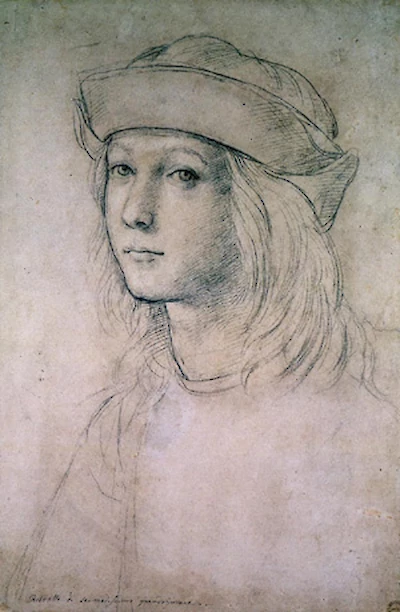Raphael Sanzio
Star boy parties himself to death




Raphael Sanzio was one of the great masters of the Italian Renaissance. A super-heroic Illuminati artist and canny businessman, Raphael was a court favorite throughout his career and performed massive architectural commissions for Pope Julius II and later Pope Leo X. But there was steep competition for artistic genius in 15th century Italy.
Raphael is considered to be one of the ‘holy trinity’ of the Italian Renaissance masters, along with Michelangelo and Leonardo da Vinci. But while Da Vinci was 30 years older than Raphael, Michelangelo was 8 years his senior, and became a bitter rival. Giorgio Vasari, in his “Lives of the Artists,” attributes Michelangelo’s commission for the Sistine Chapel to a vindictive scheme by Raphael. According to Vasari, Michelangelo preferred sculptural work and avoided frescos, fearing he couldn’t compare with Raphael. So to force a direct comparison, a friend of Raphael persuaded Pope Julius II to commission Michelangelo to complete the massive fresco. Though the Sistine Chapel eventually became an unparalleled masterpiece, it was a herculean and miserable project that took Michelangelo fours years to complete and strained his relationship with the pope to the breaking point.
Raphael, in the meantime, completed more personal commissions throughout the Vatican. The Stanze frescos in the Pope Julius’s own living quarters, which included works like Disputation of the Holy Sacrament and The School of Athens, is considered to be among the finest examples of Renaissance art.
At the height of his productivity and extraordinary fame, Raphael ran a workshop of fifty artisans, possibly the largest studio of his day. According to Vasari, Raphael was as capable in management as he was at subterfuge, and his workshop hummed with efficiency and harmony. Even after his sudden and startling death, Raphael’s workshop continued his commissions in the master’s style.
Here we turn again to Vasari, ancient historian and gossip monger. Vasari makes very clear that Raphael’s professional skill was matched only by his lust. Raphael never married and had many lovers, but Margherita Luti was his dream, his nightmare, and apparently, his end. Describing a night of unparalleled passion with Luti, Vasari wrote: “Raffaello continued to divert himself beyond measure with the pleasures of love; whence it happened that, having on one occasion indulged in more than his usual excess, he returned to his house in a violent fever.” The fever and mishandled treatment by his doctors was too much for Raphael, who died on Good Friday in 1520 at age 37.
So the wunderkind built an empire, trapped his enemies, and sexed himself to death. If you can’t get enough Raphael, you can read Vasari’s full, lurid biography here: Lives of the Artists: Raphael Sanzio.
...
Got questions, comments or corrections about Raphael Sanzio? Join the conversation in our Discord, and if you enjoy content like this, consider becoming a member for exclusive essays, downloadables, and discounts in the Obelisk Store.